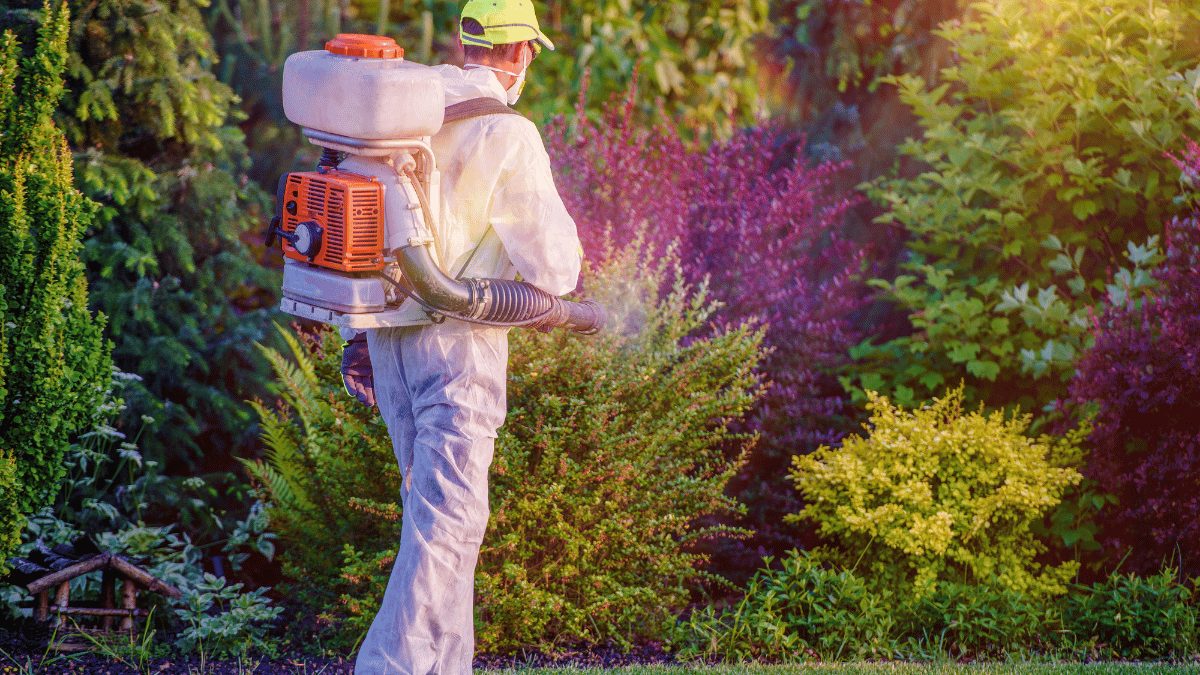
Unveiling the Importance of Tree Pest Control
Trees are a fundamental component of our environment, providing numerous ecological, economic, and aesthetic benefits. However, they face various challenges, with insect and disease infestations posing a significant threat. In this article, we delve into tree pest control, exploring the top ten pests affecting landscape plants in the northeastern United States and the invaluable benefits of proactive management.
The Menace Within Top Ten Tree Pests
Hemlock Wooly Adelgid
These tiny, aphid-like insects target hemlock trees, causing significant damage by sucking sap from the needles. Due to the adelgid’s protective waxy coating, infested trees exhibit a characteristic woolly appearance.
1. Winter Moths
Operating during late fall and early winter, these pests defoliate a variety of trees. Their larvae voraciously feed on leaves, impacting the tree’s ability to photosynthesize and thrive.
2. Japanese Beetles
Known for their voracious appetite, Japanese beetles can skeletonize foliage and wreak havoc on ornamental plants. The adults feed on over 300 species of plants, while the larvae target grassroots.
3. Asian Long-Horned Beetles
These wood-boring beetles threaten hardwood trees, including maple and birch. The larvae tunnel through the tree’s core, causing structural damage that may lead to its demise.
4. Ambrosia Beetles
Attacking stressed or weakened trees, ambrosia beetles bore into the wood, introducing a fungus that further compromises the tree’s health. Early detection and intervention are crucial in managing this threat.
5. Southern Pine Beetles
A menace to pine trees, these beetles burrow into the inner bark, disrupting the tree’s vascular system. Infestations can lead to widespread damage and even the death of entire pine forests.
6. Emerald Ash Borer and Other Flat-Headed Borers
The emerald ash borer inflicts devastating damage to ash trees, while flat-headed borers like the bronze birch borer and two-lined chestnut borer target various tree species. These borers jeopardize the structural integrity of the affected trees.
7. Weevils
Weevils, with their distinctive snouts, pose a threat to a range of plants. They feed on leaves, buds, and fruits, impacting the overall health and aesthetics of ornamental and agricultural crops.
8. Spider Mites
These minuscule arachnids pierce plant cells to extract sap, causing stippling, discoloration, and premature leaf drop. Spider mite infestations can escalate quickly, especially in dry and hot conditions.
9. Scale Insects
These tiny, immobile insects attach themselves to tree branches and trunks, feeding on plant sap. Scale infestations can weaken trees and make them susceptible to secondary infections.
The Imperative of Tree Pest Control
1. Preserving Tree Health and Longevity
Proactive pest control measures help preserve the health and longevity of trees. By mitigating the impact of pests, trees can continue to contribute to the ecosystem, providing oxygen, sequestering carbon, and supporting biodiversity.
2. Protecting Ecosystems
Trees play a pivotal role in maintaining ecological balance. A targeted approach to tree pest control prevents the spread of invasive pests, safeguarding native flora and fauna from disruptions in their natural habitats.
3. Mitigating Economic Losses
Pest-infested trees can lead to economic losses in various sectors, including forestry, agriculture, and landscaping. Effective pest management helps protect these industries by preserving valuable tree resources.
4. Enhancing Aesthetic Value
Trees contribute significantly to the aesthetic appeal of landscapes. Controlling pests ensures that trees remain vibrant and visually pleasing, enhancing the overall beauty of urban and rural environments.
5. Preventing Tree Decline and Mortality
Timely pest control measures can prevent the decline and mortality of trees. Addressing infestations promptly is crucial in preserving the structural integrity of trees and preventing the loss of these essential components of our environment.
Contact Strobert Tree Services for Effective Tree Pest Control
In the face of these pervasive threats, the importance of professional tree pest control cannot be overstated. Strobert Tree Services stands as a beacon of expertise in the field, offering comprehensive solutions to tackle the myriad challenges posed by tree pests.
Why Choose Strobert Tree Services?
- Expertise: With years of experience, Strobert Tree Services boasts a team of arborists well-versed in identifying and managing tree pests.
- Proactive Approach: Strobert Tree Services emphasizes a proactive approach to pest control, employing preventive measures to curb infestations before they escalate.
- Environmentally Friendly Solutions: Committed to environmental sustainability, Strobert Tree Services utilizes eco-friendly solutions that effectively target pests while minimizing ecological impact.
- Tailored Solutions: Understanding that each pest infestation is unique, Strobert Tree Services provides tailored solutions to address specific challenges, ensuring optimal results for every client.
Conclusion
The benefits of tree insect and disease management extend beyond mere pest control. It encompasses plant healthcare, protecting ecosystems, mitigating economic losses, enhancing aesthetic value, and preventing tree decline and mortality. By choosing Strobert Tree Services, individuals and organizations can actively contribute to the well-being of their trees and the environment at large.

Comments are closed.